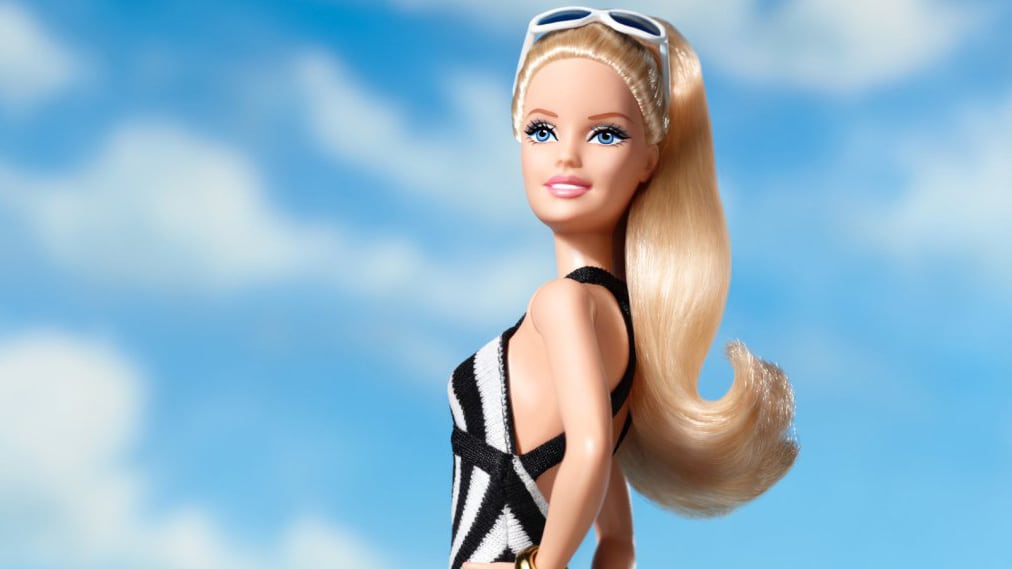PARIS — The sound of a woman’s voice singing sickly sweet lyrics for a retro advert selling Barbie dolls floats through the hallways at Les Arts Décoratifs, a part of the Louvre complex, dedicated to fashion, textiles, and the decorative arts.
The jingle goes something like this: “I know just what I will do, until I can grow up to be like you.”
I’m suddenly glad that dolls in my feminism-informed childhood were not encouraged. Snoopy was in; Barbie was positively banned from our house.
It is a day before a major Barbie exhibition opens here—which will run until Sept. 18—and the halls are filled with 700 hundred of the lifeless dolls that decorate the walls and put on display the many guises that Barbie has appeared in since the Mattel toy first went on sale in 1959.

As such, I’m having a private union of sorts with the doll that I’m sure I must have longed for at some point and seen at other children’s houses. Maybe I should have been careful what I wished for. Suddenly I’m trapped in a museum with hundreds of the dolls.
The giant walk-in dollhouse looks inviting to my semi-grown-up mind. But I also want to run for cover, so noxious is the notion to me of little girls playing with blond bimbo dolls that, as the idea goes, they should emulate later in life—even if Barbie did have over 150 professions.
On display is Barbie as an astronaut, posing with a snowboard, as a pilot, as a vet, a doctor, and as a hostess.
There is plenty of convention and nostalgia. There is Barbie dressed for an elegant dinner, in one of several antiquated looking dollhouses on the second floor, or sporting a striped swimsuit that the blond doll first made an appearance in when she launched.
Inspired by a European doll with a big wardrobe called Lilli, and then created by Ruth Handler, one of the co-founders of Mattel, the visitor reads that her voluptuous figure caused a bit of a stir among the all-male toy executives at the time.
The controversies have continued. One section displays the Fashionista line which came about after the Civil Rights movement and includes dolls of different colors and in four different silhouettes. There are no obese dolls or even ugly dolls in the Barbie universe, although there is one in a wheelchair.
In the land of Barbie, it seems, one can be entirely PC and entirely not. The evolution of the doll is limited. She might try out new jobs but she will always be a glamorpuss. She will always be pretty. She will always have parents, on display on one wall, and ponies on display nearby, in a section entitled “happy families.” Dysfunctional she is not.
It’s not hard to see why “Les Arts,” which hosts a steady roster of fashion exhibitions would go for the doll, given the mind-boggling array of outfits on display, not to mention the requisite mannequins, wigs, and mood boards from designers that have created outfits for her over time, which include Thierry Mugler and Paco Rabanne.
Barbie, we learn, became the first toy to be a best-seller, with the initial run of 20,000 dolls having to be immediately tripled.
Put together by Anne Monier, the curator of the toy department, we learn that Ruth Handler, one of Mattel’s co-founders, launched the three-dimensional doll, despite objections from her all-male colleagues, after observing that the female children around her wanted a figure they could emulate when they grow up. They were bored of playing with paper dolls.
But dress was always key.
“The doll was conceived as a fashion toy, not to play mother with or cuddle with, but to be dressed and undressed,” Monier told the fashion trade WWD. “When Ruth Handler created Barbie in 1959, she had the full wardrobe in mind. The doll itself isn’t very expensive, so that girls can get the clothes, accessories, shoes, handbags, etcetera.”
Monier points out that Barbie was launched as a fashion doll.
There is a Dior Barbie, a Diane von Furstenberg Barbie jetting off with a suitcase. There is even a Karl Lagerfeld Barbie dressed just like the designer, and one inspired by the TV show, Mad Men. Fashion designers are part of her family. Shoe designer Christian Louboutin became her godfather in 2009, we learn.
Tomboy looks are few and far between. There are no lesbian dolls or Barbie in progressive menswear even, just Barbie, friends, family, and Ken.
Despite the objectionable idea of this perfect, pretty woman dominating little girls’ lives, perhaps it’s proof that clothes maketh the plastic doll. What catches the eye in this silly universe is her outfits. I’m glad I didn’t grow up thinking I want to be like Barbie, but even I want to dress like Barbie now. There’s just something so cute about her look.
Barbie has always been a pretty-in-pink type of girl, especially when scuba diving. There are no gothic looks. She’s not a risk taker, although she does like Martin Margiela and even Jeremy Scott.
Barbie is mostly dressed to get laid. She prefers skirts to trousers, loves to show off her legs and bust and, most importantly, Barbie always smiles to complete her look.
Even the most hardened feminist, and most dedicated tomboy, may find herself leaving the exhibition doing the same.

